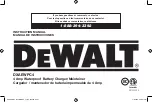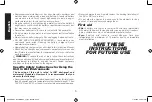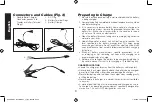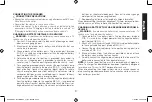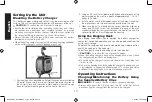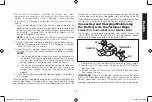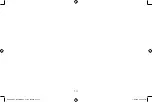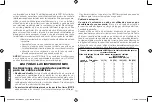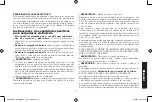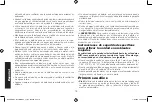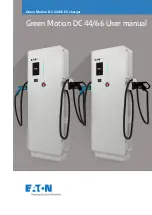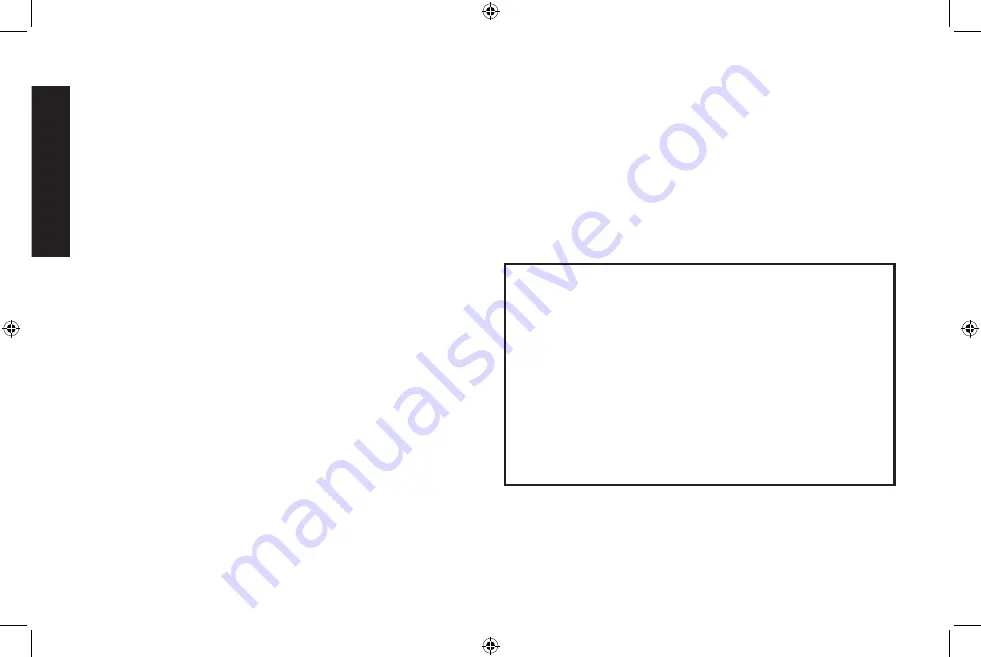
English
4
installed and used in accordance with the instructions, may cause
harmful interference to ratio communications. However, there is no
guarantee that interference will not occur in a particular installation. If
this equipment does cause harmful interference to radio or television
reception, which can be determined by turning the equipment off and
on, the user is encouraged to try to correct the interference by one or
more of the following measures:
• Reorient or relocate the receiving antenna.
• Increase the separation between the equipment and the
receiver.
• Connect the equipment into an outlet on a circuit different
from that to which the receiver is connected
• Consult the dealer or an experienced radio/TV technician
for help.
NOTICE:
Per FCC Part 15, changes or modifications to this equipment
not expressly approved by D
e
WALT could void your authority to operate
this equipment.
READ ALL INSTRUCTIONS
Specific Safety Instructions for Power Cords
•
Don’t abuse the cord.
Protect the power cord from being walked
on or pinched particularly at plugs, convenience receptacles, and the
point where they exit from the apparatus. Never carry the apparatus
by cord or yank it to disconnect from receptacle. Keep the cord
from heat, oil, and sharp edges. Pull by plug rather than cord when
unplugging the unit.
•
Ground fault circuit interrupter (GFCI)
protection should be
provided on the circuits or outlets to be used. Receptacles are
available having built in GFCI protection and may be used for this
measure of safety.
Extension Cords
An extension cord should not be used unless absolutely
necessary.
Use of an improper extension cord could result in a risk
of fire and electric shock, and will void warranty.
If an extension cord must be used, make sure your extension cord
is in good condition. When using an extension cord, be sure to use
one heavy enough to carry the current your product will draw. An
undersized cord will cause a drop in line voltage resulting in loss of
power and overheating. The following table shows the correct size
to use depending on cord length and nameplate ampere rating. If in
doubt, use the next heavier gauge. The smaller the gauge number,
the heavier the cord.
Recommended Minimum AWG Size for Extension Cords
for Battery Chargers
AC Input Rating
American Wire Gage (AWG) Size of Cord
Amperes
Length of Cord, feet (m)
Equal to or But less
25 (7.6)
50 (15.2) 100 (30.5) 150 (45.6)
greater than
than
0
2
18
18
18
16
2
3
18
18
16
14
3
4
18
18
16
14
4
5
18
18
14
12
5
6
18
16
14
12
6
8
18
16
12
10
8 10 18 14 12 10
10
12
16
14
10
8
12
14
16
12
10
8
14
16
16
12
10
8
16
18
14
12
8
8
18
20
14
12
8
6
POWER CORD SAFETY
This appliance has a polarized plug (one blade is wider than the other)
as a safety feature. This plug will fit into a polarized outlet only one way.
If the plug does not fit fully into the outlet, reverse the plug. If it still
does not fit, contact a qualified electrician. Do not attempt to defeat
this safety feature.
DXAEWPC4_ManualENSP_Type2_010920.indd 4
1/9/2020 2:20:27 PM


